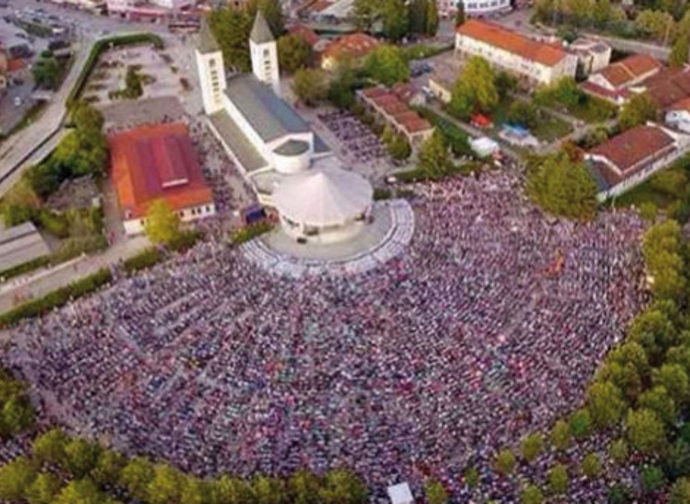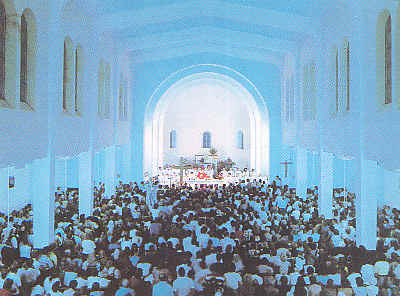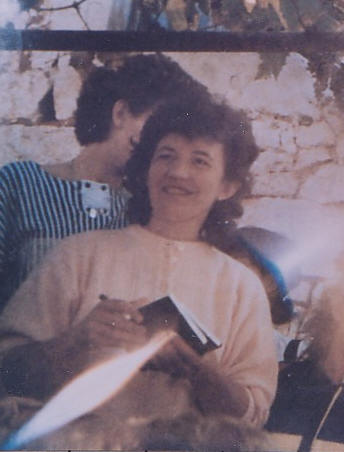There is certainly drama.
There is the potential—if only the potential—for the most momentous decision on Marian mysticism since John Paul II decided to release the third secret of Fàtima in May of 2000.
On Thursday, September 19—anniversary of the apparitions at La Salette, France—the Vatican intends to hold its first-ever press conference on Medjugorje.
This comes in the midst of a flurry of official acceptance and rejection of various apparitions and mystical experiences—nine decisions since May (an unprecedented pace)—and while the Dicastery for the Doctrine of the Faith no longer rules precisely on the supernaturality or non-supernaturality of a person or situation, its approval or rejection of devotions based on apparitions has been taken as tantamount to that. (Under new guidelines, only the Pope can declare something as supernatural or not.)
Will the devotion there be granted a “nihil obstat”? Will it be given “pontifical shrine” status?
The drama also is stoked by two rather conflicting Vatican views:
–One was from a special and highly esteemed commission formed by Pope Benedict which, after four years of study (from March 17, 2010, to January 17, 2014), declared that at least the first week of apparitions in Medjugorje were authentic (a total of seven, which is one more than were officially approved for Fàtima). It is hard to see the dicastery negate that.
–The second is the view of Pope Francis, who during one of his famous off-the-cuff press conferences aboard a plane on the way back from a journey in 2017 expressed what he called a “harsher” view than the commission.
“I personally am more suspicious,” he said, according to one translation. “These presumed apparitions don’t have a lot of value. I prefer the Madonna as Mother, our Mother, and not a woman who’s the head of an office, who every day sends a message at a certain hour. This is not the Mother of Jesus.” (At Medjugorje, apparitions are often at set times. Francis and the commission seemed especially put off by one of the seers, who has traveled widely with such scheduled messages at churches, conferences, and other venues.
The Pope’s remarks on value were confusing, flying in the face of claims that tens of millions have been converted at or because of the apparitions of Medjugorje, which began on June 24, 1981, and were looked upon positively by then-Pope John Paul II and later, though to a lesser degree, by the highly intellectual Benedict.

Thus it seems that what will be announced Thursday will be a mix: approval of devotion to Medjugorje and acknowledgement of the fruits, with remarks not all favorable to the visionaries, particularly the three who say they still see the Virgin. (The apparitions of the other three halted after they were allegedly given their tenth and final “secrets”).
It was Francis who also removed the authority of a troublesome and highly antagonistic local bishop from Mostar and replaced his authority over Medjugorje with a special papal envoy, an archbishop from Poland. Just last year, the Pontiff addressed the annual (and massive) youth festival at Medjugorje.
Meanwhile, the commission, officially known as the International Commission of Inquiry on Medjugorje, was chaired by Italian Cardinal Camillo Ruini. The primary objective was to analyze the events of Medjugorje from theological, psychological, and sociological perspectives. The commission consisted of theologians, canonists, psychologists, and other experts, reflecting a multidisciplinary approach. Over several years, the commission reviewed thousands of documents, testimonies, and other materials. They also interviewed the visionaries and local clergy and conducted on-site visits to gather comprehensive insights into the nature of the apparitions.
The findings of the Ruini Commission, although, in detail, not widely published, suggest a nuanced position regarding the apparitions—one the dicastery may adopt Thursday. This could mean recognizing the possibility of supernatural occurrences while also acknowledging human and psychological complexities that might influence the phenomena over time.
In an interview with L’Osservatore Romano last May, the Prefect of the Dicastery for the Doctrine of the Faith, Cardinal Víctor Manuel Fernández, reflected on the impact of the Vatican’s new Norms discerning presumed supernatural phenomena on the “Medjugorje case.” The Cardinal explained, “a beautiful phenomenon can grow” without requiring “a declaration of supernatural origin. In the cases of Lourdes, Fatima, and Guadalupe, their enormous growth did not depend on a declaration of supernatural origin.”
Ironically, the apparition at La Salette—a single one in 1846 (there have been thousands at Medjugorje)—also was met by nuanced official evaluations. While the apparition itself and parts of the Virgin Mary’s messages were officially recognized, other parts, which tended to be more apocalyptic and also critical of the Church, were not. Some bishops and pontiffs were favorable, also took no stand or were not favorable at all.
[resources: Michael Brown online retreat, October 13, Spirit Daily Pilgrimage to Medjugorje, and books on Medjugorje]
+





